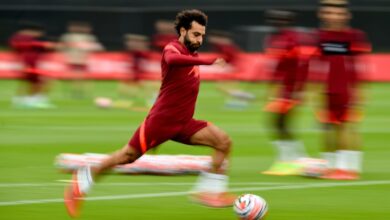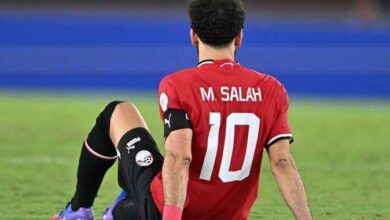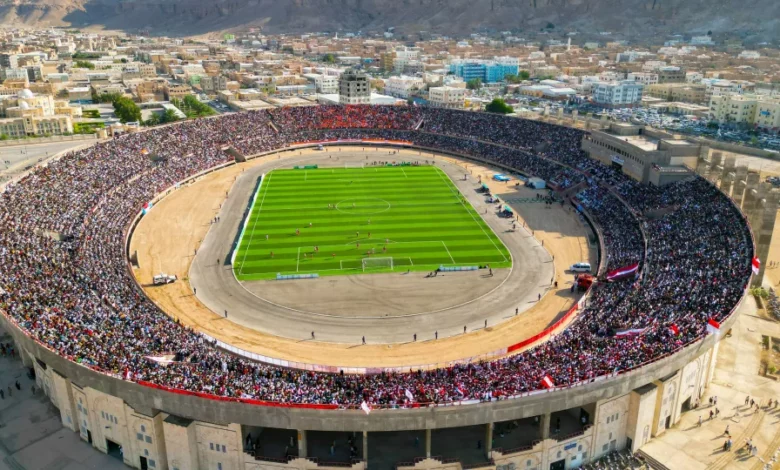
CNN – The photos, taken earlier this month, have now been viewed thousands of times: a soccer stadium, packed to the rafters, is overlooked by a rocky escarpment, the luscious green pitch providing a vivid contrast to an azure sky.
The scene is the dusty, windswept town of Seiyun in Yemen, where according to local journalists, more than 50,000 people congregated to watch the Hadramout Cup final between Shaab Al-Hadramout and Itifaq Al-Houta earlier in March.
The final was the showpiece conclusion to a regional tournament featuring teams from all over Hadramout – a region covering more than 74,000 square miles in southern Yemen.
Photographer and journalist Saan Saleh Al-Hendi was on hand to capture the action at the Seiyun Olympic Stadium.
“Most of the people, they could not enter the match because it became too full,” Al-Hendi tells CNN Sport.
The images Al-Hendi posted on social media of the packed stadium have been widely shared, perhaps because they provide a different perspective on the small nation on the tip of the Arabian Peninsula.
“Most people, they love football, because it gives them some enjoyment,” said Al-Hendi.
“I was very happy because the world heard about this match, so it was a good chance for the whole of Yemen.”
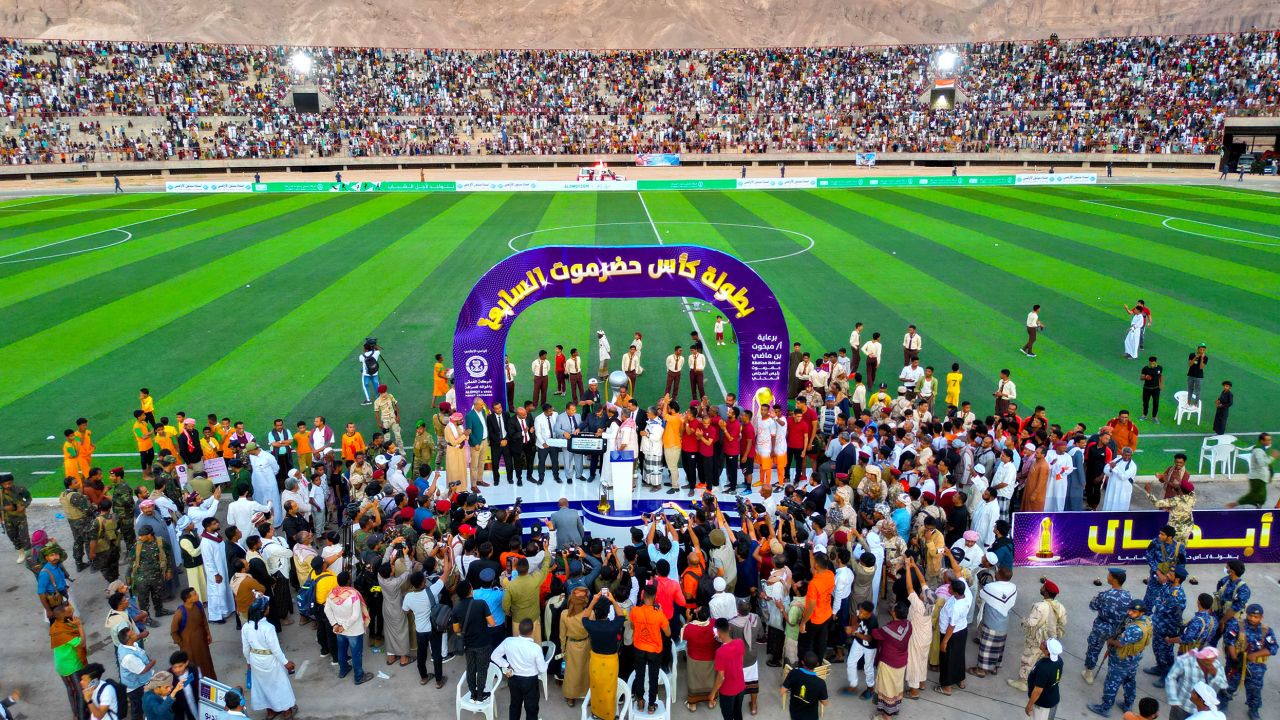
Ongoing conflict
For the last eight years, Yemen has been torn apart by conflict with a Saudi-led coalition trying to crush the Iran-backed Houthis.
The Islamist group – also known as Ansarullah – overthrew the internationally recognized government, leading to a years-long fuel blockade imposed by the coalition and supported by the United States.
A ceasefire in April 2022 stopped all but the most sporadic fighting, but the country remains broken between hostile factions.
The warring parties failed to renew a truce brokered by the UN in October.
But despite fears widespread violence will erupt again, the lull in fighting has continued.
Oman is brokering negotiations on a deal to end the wider conflict, according to a monthly forecast from the Security Council Report.
The conflict has forced 4.5 million Yemenis from their homes according to the UN. Yemen also endured the world’s worst modern outbreak of cholera, accounting for 93% of all reported cholera cases in 2019.
The UN Refugee Agency estimated between 70 and 80% of the population were in need of humanitarian aid as of last spring.
‘Islands of football’ in a sea of uncertainty
Amid the pain and suffering of war and disease, hope persists on the pitch.
Yemeni football is a scene that is exactly like the country at present. It is very volatile and it’s very unstable. Yet in places there are many inspiring stories,” says Uri Levy, the founder of Babagol, an international football content brand.
“The will and the appetite for football – doesn’t matter the level, doesn’t matter the professionalism or whatever – is there full on,” he tells CNN Sport.
The seventh edition of the Hadramout Cup, hosted by the regional government, kicked off with 44 teams competing in a group stage before switching to a knockout tournament. According to Al-Hendi, all the matches were played in either the ancient city of Seiyun or the port city Mukalla 220 miles further south.
In the final between Shaab Hadramout and Itifaq Al-Houta, Ibrahim Bin Fathil had put Itifaq in the lead before Majed Baslum equalized to take the final to a penalty shootout, which Itifaq won 4-2 to secure the victory.
The tournament offers a haven where soccer is able to continue. As Levy explains, the sport has become restricted to these “islands” in Yemen while any the conflict continues.
“The Hadramout Cup is basically the most sustainable way in Yemen nowadays to organize football,” he says.
According to Levy, Yemen’s top-flight soccer league was cancelled in 2014 and has not been able to restart since the conflict.
Given the country’s political divisions, having a national league hasn’t been an option.
That explains why soccer in Yemen has been largely limited to regional tournaments like the Hadramout Cup, though the Aden Capital Cup concluded just a week earlier in front of a similarly sizable and colorful crowd.
“Basically, football in Yemen has existed in bubbles,” Levy says. “As long as there are some islands [with] security levels that make it possible. It’s the answer for not having a national league.”
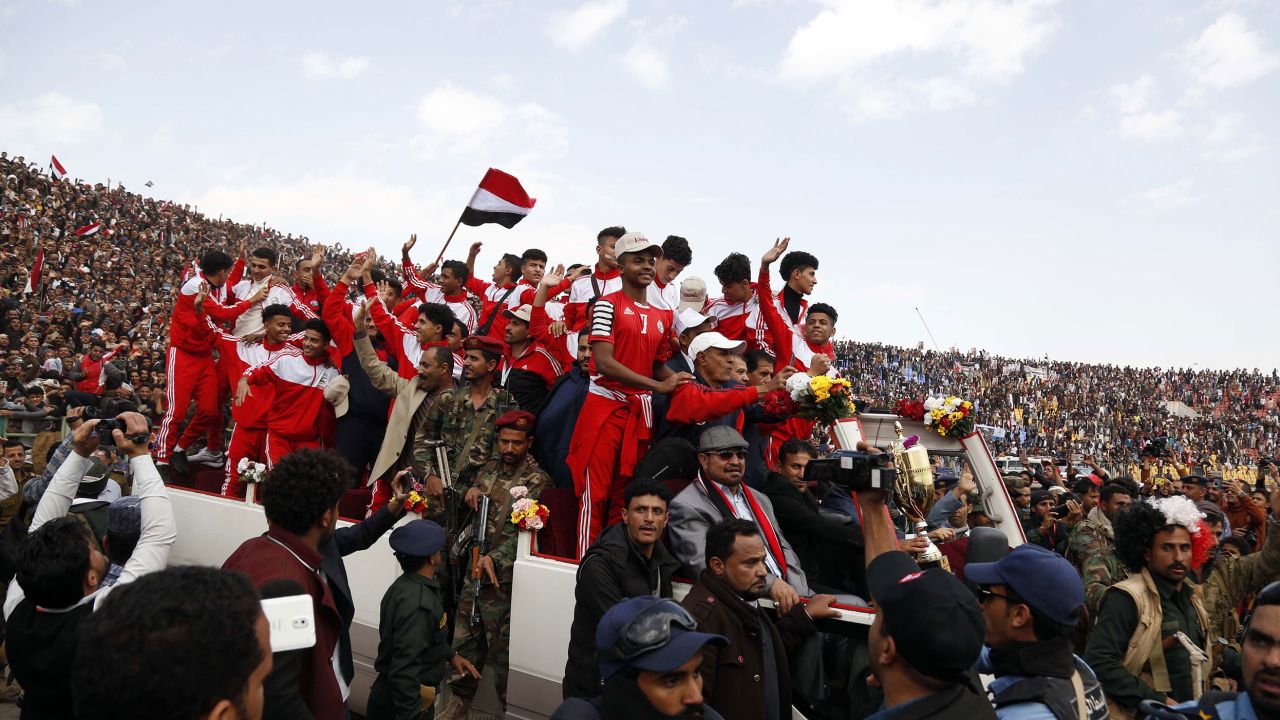
Hopeful future
In December 2021, Yemen’s Under-15 team took part in the West Asian Football Federation Championship in Saudi Arabia.
Yemen thrashed Bahrain 5-0 before beating Jordan and Syria to set up a meeting with host and neighbor Saudi Arabia in the final.
The Yemeni Under-15 players held their nerve and beat Saudi Arabia on penalties, sending the country into bedlam.
Images were widely shared on social media of cities from across the country full of fans celebrating by lighting fireworks, honking car horns and even shooting bullets into the sky.
“When we saw the national team of Yemen play and succeed, it was a win for the whole of Yemen. They come together and feel happy,” says Al-Hendi.
“It really was a rare event. They won against Saudi Arabia, in Saudi Arabia. So the joy, I think, was double,” adds Levy.
“Even if you live in Aden, I think it was a good reason to celebrate and a rare moment for the Yemeni people to feel proud of themselves.”
Earlier this year, Yemen took part in the Arabian Gulf Cup in Iraq.
Despite losing heavily to the host country, Yemen only conceded two to Saudi Arabia and scored the country’s first competitive goals in almost four years in a narrow 3-2 loss to neighbor Oman.
Levy drew hope from another country in the region, Iran, where after the revolution, fans did not have national league soccer for close to a decade.
“There was only a regional tournament taking place, we didn’t have football to develop, but it [regional football] kept football alive.”
Levy references Iranian clubs like Persepolis and Esteghlal, which kept going thanks to independent regional tournaments before national competitions returned.
While clubs like Shaab Hadramout and Itifaq Al-Houtah are a long way from competing nationally, let alone internationally, moments like the Hadramout Cup final seemingly give hope to soccer-crazy fans in Yemen.
It is perhaps a window into a more hopeful future for Yemeni sports fans.



